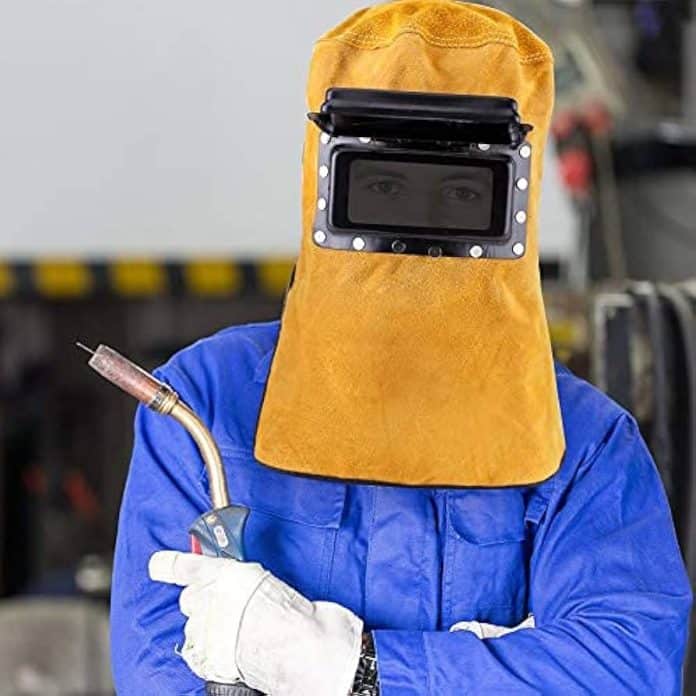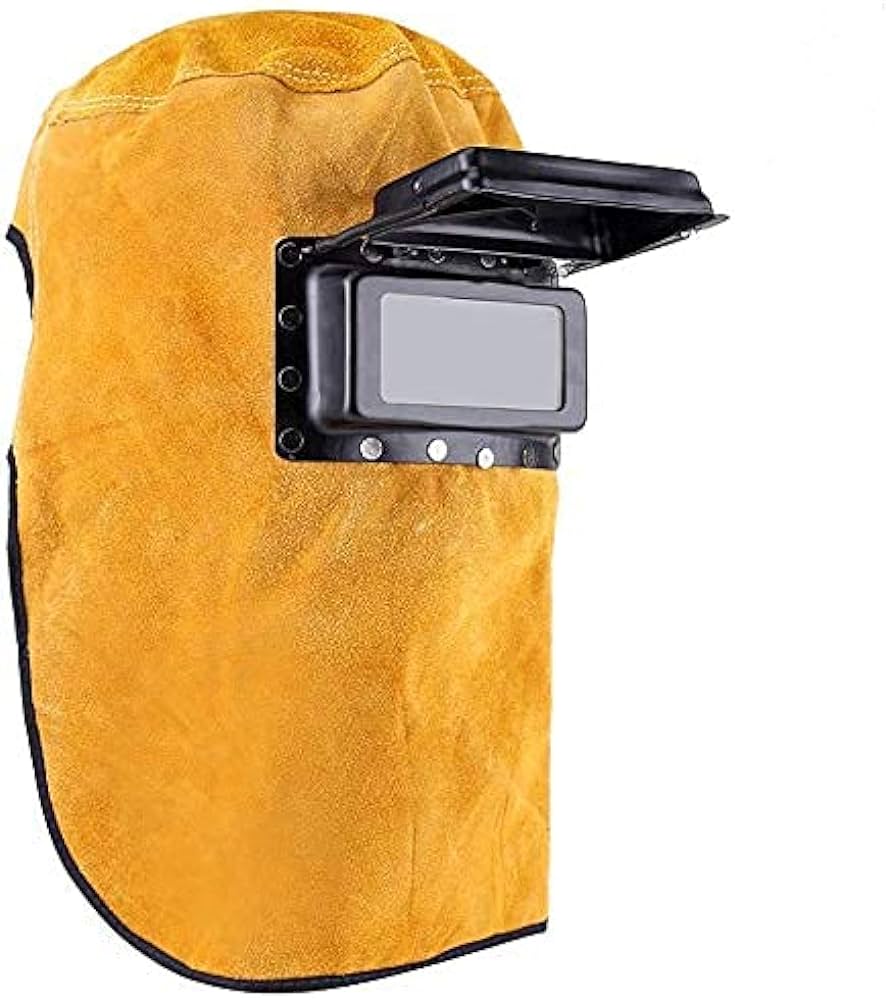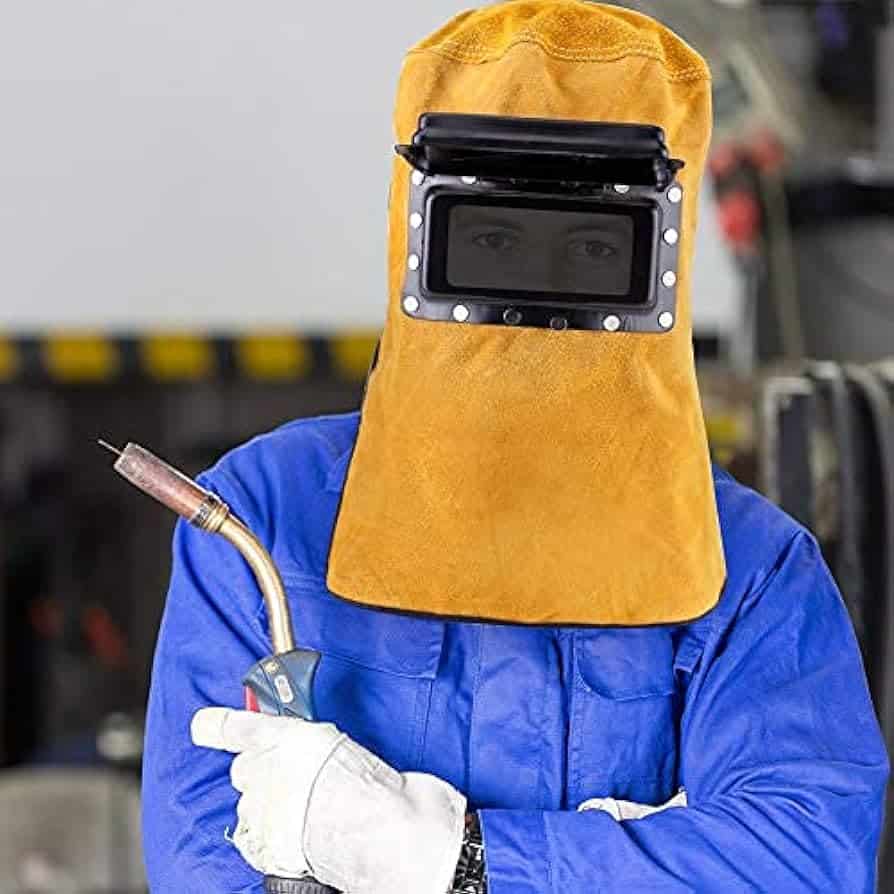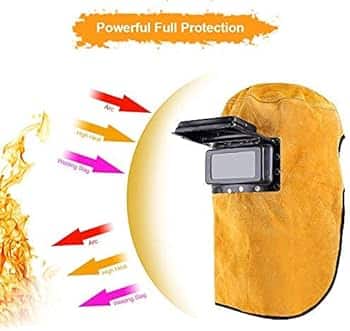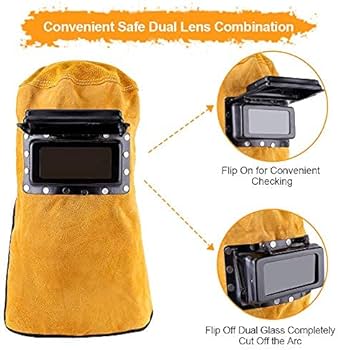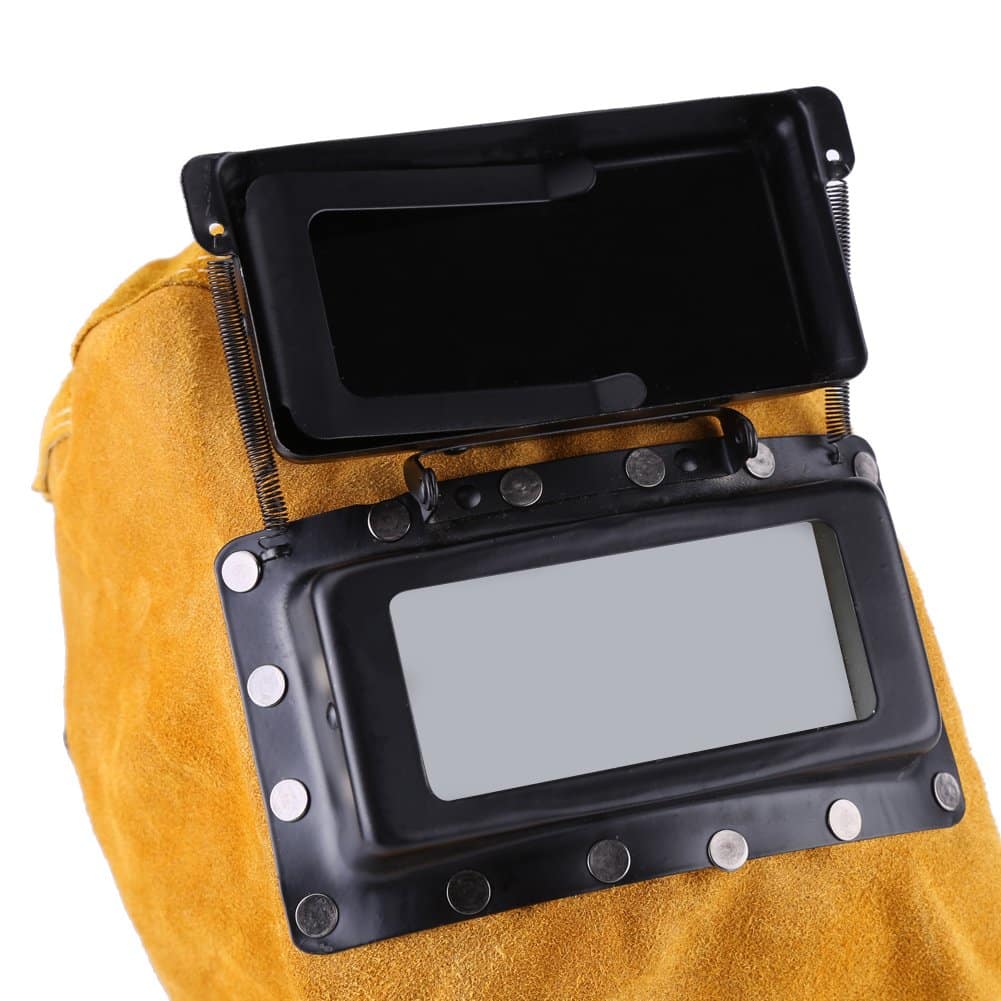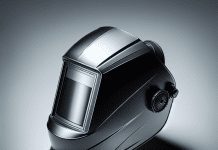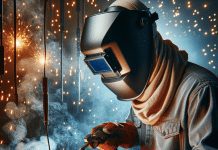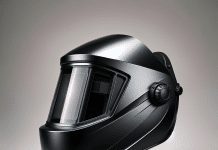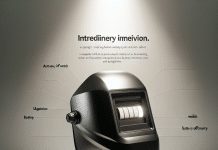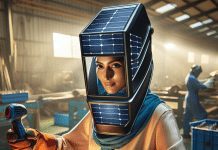If you’re a welder, then you know how crucial it is to have the right protective gear. And when it comes to hot weather, finding a welding helmet that not only keeps you cool but also provides the necessary protection can be a challenge. That’s where welding helmets specifically designed for hot weather come in. These innovative helmets are crafted with advanced cooling technology to help you beat the heat while still ensuring your safety. In this article, we’ll explore the features and benefits of welding helmets for hot weather, allowing you to stay cool and protected even in the hottest working conditions.
This image is property of Amazon.com.
Review contents
Choosing the Right Welding Helmet
When it comes to welding in hot weather, choosing the right welding helmet is crucial to ensure comfort, safety, and productivity. There are several factors to consider when selecting a welding helmet that is suitable for hot weather conditions.
Consider the Temperature Rating
One of the key factors to consider when choosing a welding helmet for hot weather is the temperature rating. Look for a helmet that is designed to withstand high temperatures without compromising its integrity. Welding in hot conditions can lead to the build-up of heat inside the helmet, so it’s important to choose a helmet that can withstand these conditions without affecting your comfort or safety.
Look for Lightweight Materials
Opting for a welding helmet made from lightweight materials is essential for hot weather welding. Lighter helmets are more comfortable and reduce strain on your neck and shoulders during long welding sessions. Look for helmets made from materials such as carbon fiber or thermoplastic, as these materials offer both durability and lightweight properties.
Opt for Helmets with Good Ventilation
Proper ventilation is crucial when working in hot weather conditions. Look for welding helmets with adjustable vents or openings that allow the flow of air to keep you cool. Good ventilation also helps to prevent the buildup of moisture inside the helmet, which can lead to discomfort and fogging of the lens.
Choose Helmets with Sweatbands
Sweat can have a significant impact on your comfort and visibility while welding in hot weather. Look for helmets that come with built-in sweatbands or have space to attach them. Sweatbands help to absorb sweat and keep it away from your face and eyes, allowing you to focus on your work without distractions.
Consider the Lens Shade
The lens shade is another important aspect to consider when selecting a welding helmet for hot weather. Choose a lens shade that provides adequate protection from the intense brightness of welding arcs while allowing sufficient visibility. Opt for a helmet with a lens shade that is suitable for the specific type of welding you will be performing.
Key Features for Hot Weather Welding Helmets
In addition to the factors mentioned above, there are several key features to look for in welding helmets specifically designed for hot weather conditions. These features contribute to enhanced comfort and protection while working in high temperatures.
High-Quality Cooling Systems
Welding helmets with high-quality cooling systems are designed to keep you cool and comfortable in hot weather. These cooling systems may include adjustable fans or air channels that promote the circulation of air inside the helmet, reducing heat buildup.
Moisture-Wicking Technology
Moisture-wicking technology is essential in hot weather welding helmets. Look for helmets with moisture-wicking liners or sweatbands that help absorb and evaporate sweat, keeping you dry and reducing discomfort.
Adjustable Air Flow
Having the ability to adjust the air flow inside your welding helmet is essential for hot weather conditions. Look for helmets with adjustable vents or air channels that allow you to control the amount of airflow based on your comfort level.
Ergonomic Design
An ergonomic design is crucial for a comfortable and secure fit, especially in hot weather. Look for welding helmets with features such as adjustable headbands, padded straps, and a lightweight design that ensures a proper fit and reduces strain on your neck and shoulders.
Anti-Fog Coatings
Hot weather and high humidity can lead to lens fogging inside the welding helmet, negatively impacting visibility. Choose a helmet with anti-fog coatings on the lens to prevent fogging and ensure clear vision throughout your welding tasks.
Types of Welding Helmets for Hot Weather
There are different types of welding helmets available, each with its own benefits and considerations when it comes to hot weather welding.
Auto-Darkening Welding Helmets
Auto-darkening welding helmets are a popular choice for hot weather welding due to their versatility and convenience. These helmets feature a lens that automatically adjusts the shade according to the intensity of the arc, providing optimal protection while allowing for improved visibility. Look for models with adjustable sensitivity and delay settings to suit your specific welding needs.
Passive Welding Helmets
Passive welding helmets, also known as standard welding helmets, are a simple and affordable option. These helmets have a fixed shade lens that doesn’t automatically adjust to different light levels. While they may not offer the same level of convenience as auto-darkening helmets, they are still suitable for hot weather welding as long as the lens shade is appropriate.
Powered Air-Purifying Respirators (PAPR)
Powered Air-Purifying Respirators (PAPR) welding helmets provide both respiratory and eye protection in hot weather conditions. These helmets have a built-in powered air system that delivers filtered airflow, keeping you protected from harmful particles and fumes while providing a constant flow of fresh air.
Welding Helmets with Integrated Cooling Systems
Some welding helmets are specifically designed with integrated cooling systems to combat heat buildup in hot weather. These helmets may include adjustable fans, air vents, or even cooling packs that provide a constant stream of cool air, keeping you comfortable throughout your welding tasks.
Materials for Hot Weather Welding Helmets
The choice of materials for welding helmets is crucial when it comes to hot weather conditions. Here are some materials commonly used in welding helmets that are suitable for hot weather welding.
Polycarbonate
Polycarbonate is a lightweight and durable material commonly used in welding helmet lenses. It offers excellent impact resistance and provides good protection against UV radiation. Look for helmets with polycarbonate lenses that have additional anti-scratch and anti-fog coatings for enhanced durability and visibility.
Fiberglass
Fiberglass is a lightweight, heat-resistant material commonly used in the construction of welding helmet shells. It offers good protection against high temperatures and impact. Look for helmets with fiberglass shells that are designed to withstand hot weather conditions and provide reliable protection.
Nylon
Nylon is another lightweight and durable material commonly used in welding helmets. It offers good resistance to heat and chemicals, making it suitable for hot weather welding. Look for helmets with nylon components that provide a comfortable fit and reliable protection.
Carbon Fiber
Carbon fiber is a strong and lightweight material commonly used in high-end welding helmets. It offers excellent heat resistance and impact protection. Look for helmets with carbon fiber components that provide superior durability and comfort in hot weather conditions.
Thermoplastic
Thermoplastic is a versatile material commonly used in welding helmet shells. It offers good heat resistance and impact protection while also being lightweight. Look for helmets with thermoplastic shells that are designed to withstand hot weather conditions and provide reliable protection.
This image is property of Amazon.com.
Maintaining Comfort and Safety
Once you have chosen the right welding helmet for hot weather conditions, it’s important to properly maintain it to ensure both comfort and safety throughout your welding tasks.
Regularly Clean and Replace Helmet Padding
The padding inside your welding helmet plays a crucial role in providing comfort and a secure fit. Regularly clean the padding to remove sweat and dirt buildup. If the padding becomes worn or loses its shape, consider replacing it to maintain optimal comfort and safety.
Adjust Helmet Straps Properly
Properly adjusting the helmet straps is essential for a secure and comfortable fit. Make sure the helmet sits snugly on your head without being too tight or too loose. Adjust the straps to ensure a proper balance and minimize strain on your neck and shoulders.
Keep Helmet Exterior Clean
Maintaining a clean exterior of your welding helmet is important for both safety and aesthetics. Remove any debris or dirt that may accumulate on the outer shell to ensure proper functionality and improve longevity.
Stay Hydrated
Working in high temperatures can lead to dehydration, which can affect both your comfort and safety. Make sure to drink plenty of fluids before, during, and after your welding tasks to stay hydrated and maintain optimal performance.
Take Breaks under Appropriate Shelter
Taking regular breaks under appropriate shelter is essential to prevent overheating and heat-related illnesses. Find a shaded area or set up a canopy to protect yourself from direct sunlight and allow your body to cool down before resuming your welding tasks.
Additional Accessories for Hot Weather Welding
In addition to choosing the right welding helmet, there are several accessories you can consider to further enhance your comfort and protection in hot weather conditions.
Cooling Neck Wraps
Cooling neck wraps are designed to provide instant relief from heat. These wraps can be soaked in water and worn around the neck to help lower body temperature and reduce discomfort during hot weather welding.
Sweatbands
Sweatbands are a simple yet effective accessory for managing sweat during welding in hot weather. These bands can be worn around the forehead or attached to the helmet to absorb sweat and keep it away from your eyes, ensuring clear vision and improved comfort.
Welding Gloves with Breathable Materials
Choosing welding gloves made from breathable materials is essential for maintaining comfort and dexterity in hot weather conditions. Look for gloves that offer heat resistance while also allowing airflow to prevent excessive sweating.
Heat-Resistant Aprons
Heat-resistant aprons provide additional protection for your body while welding in hot weather conditions. These aprons are designed to withstand high temperatures and protect against sparks and spatter, keeping you safe and cool.
Headband Fans
Headband fans are a great accessory for providing a constant stream of cool air to your face and neck during hot weather welding. These lightweight fans can be attached to the helmet or worn separately to provide a refreshing breeze and keep you cool.
This image is property of Amazon.com.
Tips for Welding in Hot Weather
In addition to choosing the right equipment and accessories, here are some tips to help you stay comfortable and safe while welding in hot weather conditions.
Schedule Welding Tasks Wisely
Avoid scheduling welding tasks during the hottest parts of the day. Try to work in the early morning or late afternoon when temperatures are cooler. This will help reduce your exposure to extreme heat and minimize discomfort.
Position Welding Equipment Properly
Positioning your welding equipment in a way that maximizes airflow and minimizes heat buildup is crucial in hot weather conditions. Ensure that your workspace is well-ventilated and that your welding equipment is positioned to maximize the flow of air around you.
Use Reflective Barriers or Screens
Using reflective barriers or screens can help redirect heat away from your work area and reduce exposure to direct sunlight. Position reflective materials strategically to create shaded areas and minimize the impact of intense heat on your workspace.
Create Shaded Areas
If possible, create shaded areas around your welding workstation to protect yourself from direct sunlight. Set up canopies or use existing structures to provide shade and help keep you cool while working.
Wear Proper Clothing and Sunscreen
Wearing suitable clothing and applying sunscreen is essential for protecting your skin from the harmful effects of the sun’s UV rays. Opt for lightweight, breathable clothing that covers exposed skin, and choose a broad-spectrum sunscreen with a high SPF rating to protect against sunburn.
Importance of Protecting from Heat and Radiation
Understanding the importance of protecting yourself from heat and radiation while welding in hot weather is crucial for both short-term comfort and long-term health. Here are some key reasons why protecting yourself is essential.
Heat-related Illnesses
Working in hot weather without adequate protection can lead to heat-related illnesses such as heat exhaustion or heatstroke. These conditions can have severe consequences on your health and performance, and they can be prevented by taking appropriate measures to stay cool and hydrated.
UV Radiation Exposure
Welding processes generate intense UV radiation, which can cause skin burns, eye damage, and increase the risk of developing skin cancer. Protecting yourself from UV radiation by wearing appropriate protective gear, such as a welding helmet with a suitable lens shade and proper clothing, is essential for preventing these risks.
Eye Protection
Your eyes are particularly vulnerable during welding, and protecting them from harmful radiation and bright welding arcs is crucial. Choosing a welding helmet with a suitable lens shade and wearing proper eye protection, such as safety glasses or goggles, is essential for preserving your vision and preventing eye injuries.
Skin Protection
Exposure to intense heat and UV radiation during welding can cause burns, skin damage, and increase the risk of developing skin cancer. Wearing suitable protective clothing, such as long-sleeved shirts, long pants, and heat-resistant aprons, is essential for protecting your skin from these hazards.
Respiratory Protection
Welding processes can generate hazardous fumes and particles that can be inhaled, leading to respiratory issues and long-term health problems. Using appropriate respiratory protection, such as powered air-purifying respirators or respirator masks, helps protect your lungs from these harmful substances.
This image is property of Amazon.com.
Common Mistakes to Avoid
While it’s important to know the right steps to take when welding in hot weather, it’s equally important to be aware of common mistakes that should be avoided to ensure your safety and comfort.
Choosing a Helmet with Insufficient Ventilation
Selecting a welding helmet with insufficient ventilation can result in poor airflow, leading to heat buildup and discomfort during hot weather welding. Make sure to choose a helmet with adjustable vents or openings that allow for proper air circulation.
Neglecting to Replenish Fluids
Failing to replenish fluids and stay hydrated is a common mistake that can have serious consequences in hot weather conditions. Drink plenty of fluids before, during, and after your welding tasks to stay hydrated and maintain optimal performance.
Excessive Exposure to UV Rays
Exposing yourself to excessive UV radiation without proper protection can have long-lasting effects on your health. Always wear the appropriate protective gear, such as a welding helmet with a suitable lens shade and protective clothing, to minimize your exposure to harmful UV rays.
Not Adjusting Helmets Properly
Not adjusting your welding helmet properly can lead to discomfort, poor visibility, and compromised safety. Take the time to adjust the helmet straps and headband to ensure a snug and secure fit that keeps you comfortable and protected.
Using Non-Compliant Safety Equipment
Using safety equipment that is not compliant with industry standards or regulations can pose serious risks during hot weather welding. Ensure that all your safety equipment, including your welding helmet, meets the necessary safety standards and provides the required protection.
Conclusion
Selecting the right welding helmet for hot weather conditions is crucial for both your comfort and safety. Consider factors such as temperature rating, lightweight materials, ventilation, sweatbands, and lens shade to make an informed choice. Explore the different types of welding helmets available, such as auto-darkening helmets and PAPR helmets, and choose the one that best suits your specific needs. Additionally, pay attention to the materials used in welding helmets and opt for those that offer heat resistance and durability. Remember to properly maintain your welding helmet, use additional accessories for hot weather welding, and follow the tips provided to ensure a safe and comfortable welding experience. By prioritizing your comfort and protecting yourself from heat and radiation, you can stay cool and protected while welding in hot weather.
This image is property of Amazon.com.

